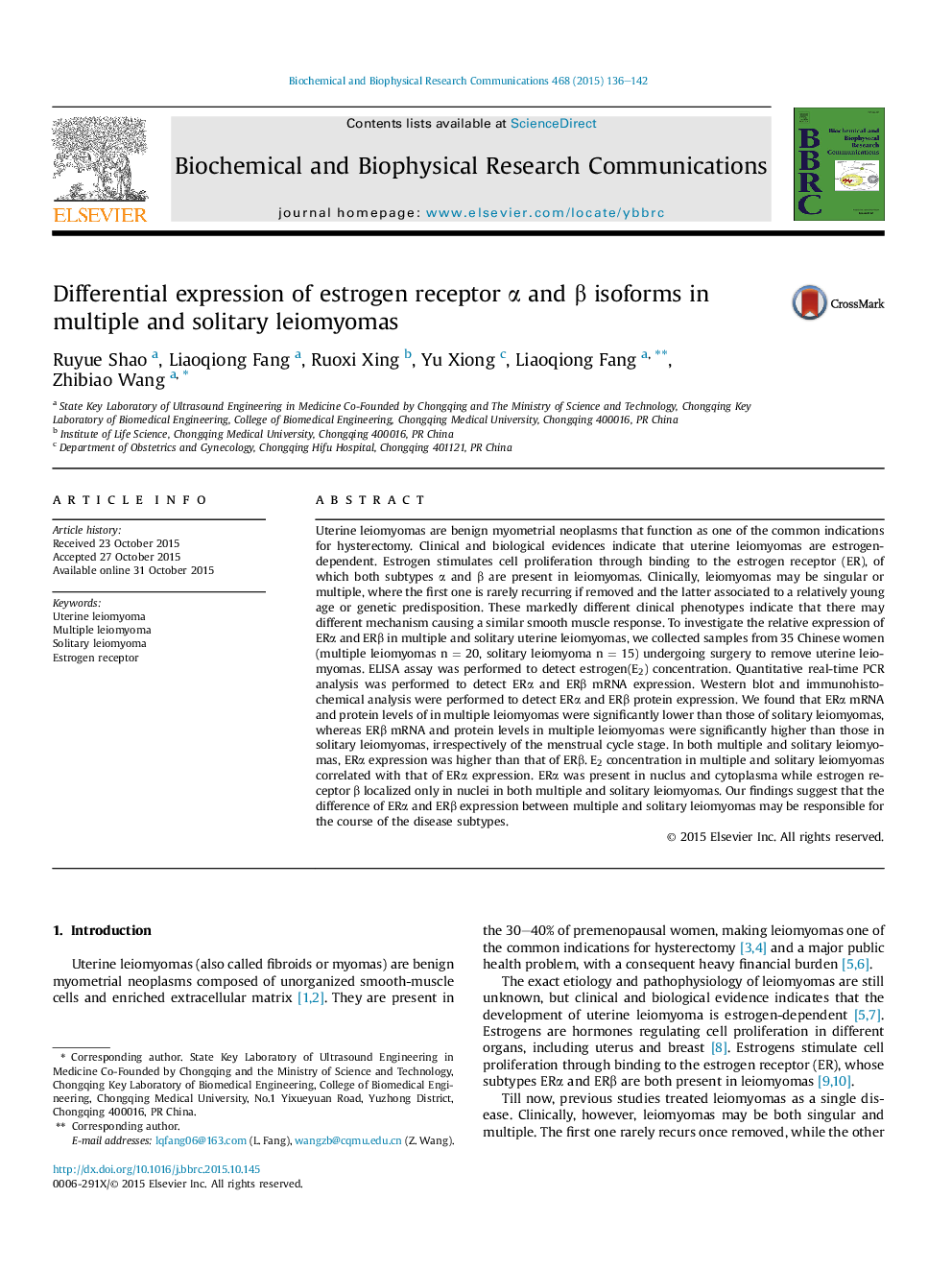| Article ID | Journal | Published Year | Pages | File Type |
|---|---|---|---|---|
| 8296672 | Biochemical and Biophysical Research Communications | 2015 | 7 Pages |
Abstract
Uterine leiomyomas are benign myometrial neoplasms that function as one of the common indications for hysterectomy. Clinical and biological evidences indicate that uterine leiomyomas are estrogen-dependent. Estrogen stimulates cell proliferation through binding to the estrogen receptor (ER), of which both subtypes α and β are present in leiomyomas. Clinically, leiomyomas may be singular or multiple, where the first one is rarely recurring if removed and the latter associated to a relatively young age or genetic predisposition. These markedly different clinical phenotypes indicate that there may different mechanism causing a similar smooth muscle response. To investigate the relative expression of ERα and ERβ in multiple and solitary uterine leiomyomas, we collected samples from 35 Chinese women (multiple leiomyomas n = 20, solitary leiomyoma n = 15) undergoing surgery to remove uterine leiomyomas. ELISA assay was performed to detect estrogen(E2) concentration. Quantitative real-time PCR analysis was performed to detect ERα and ERβ mRNA expression. Western blot and immunohistochemical analysis were performed to detect ERα and ERβ protein expression. We found that ERα mRNA and protein levels of in multiple leiomyomas were significantly lower than those of solitary leiomyomas, whereas ERβ mRNA and protein levels in multiple leiomyomas were significantly higher than those in solitary leiomyomas, irrespectively of the menstrual cycle stage. In both multiple and solitary leiomyomas, ERα expression was higher than that of ERβ. E2 concentration in multiple and solitary leiomyomas correlated with that of ERα expression. ERα was present in nuclus and cytoplasma while estrogen receptor β localized only in nuclei in both multiple and solitary leiomyomas. Our findings suggest that the difference of ERα and ERβ expression between multiple and solitary leiomyomas may be responsible for the course of the disease subtypes.
Keywords
Related Topics
Life Sciences
Biochemistry, Genetics and Molecular Biology
Biochemistry
Authors
Ruyue Shao, Liaoqiong Fang, Ruoxi Xing, Yu Xiong, Liaoqiong Fang, Zhibiao Wang,
